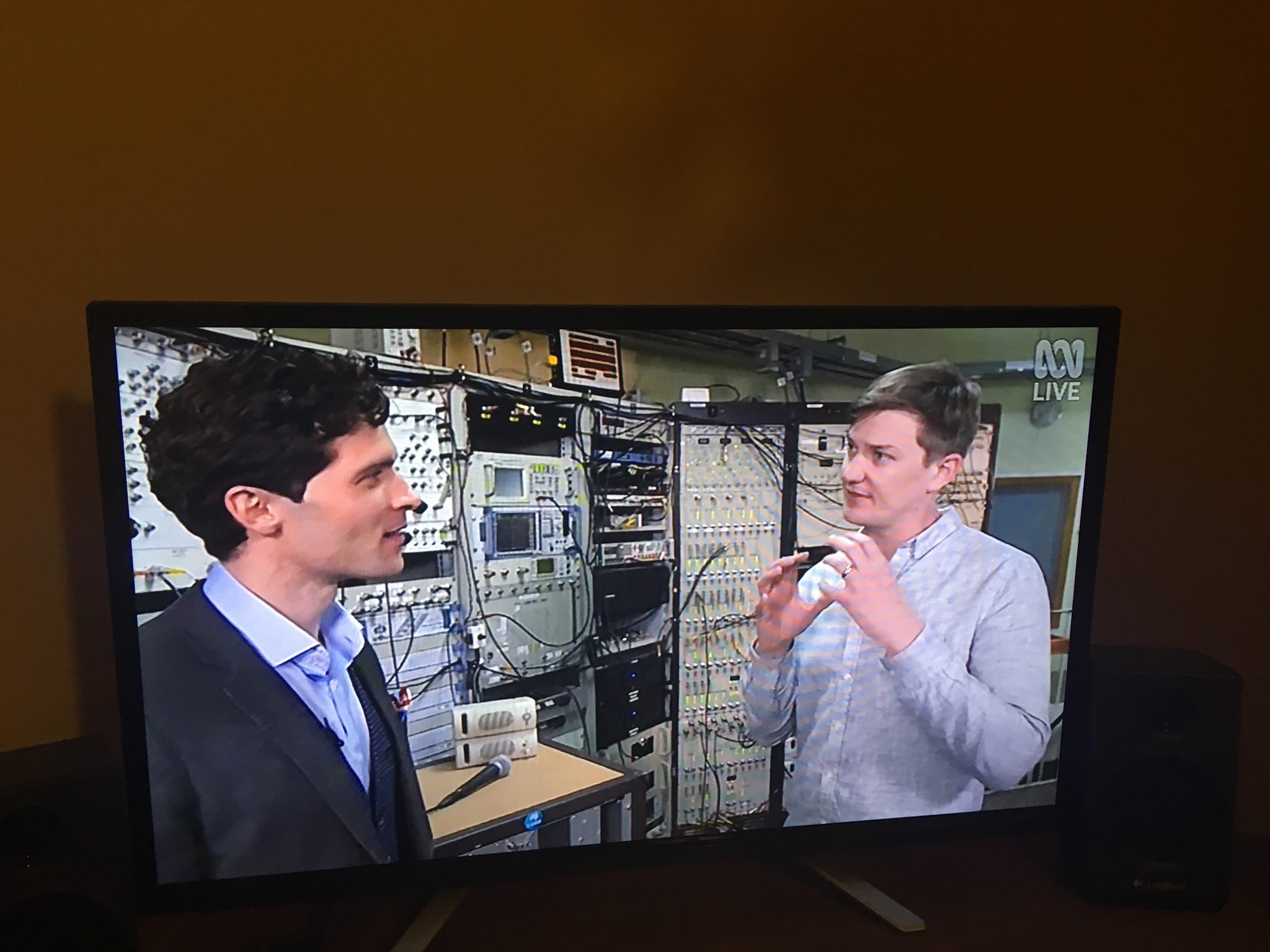ABC Stargazing Live
Last week, Breakthrough Listen participated in the Australia Broadcasting Corporation's Stargazing Live TV show (for those of you in Australia, you can still catch the episode on ABC iView). The show was jam-packed with content, so we had to cram everything into just 5 minutes. For those of you left craving more, we thought we'd write up a bit more about what was going on here!
In the show, Alan Duffy and I observed the pulsar Vela (J0835-4559) and the exoplanet Wolf 1061 c with the Parkes radio telescope. These were not ordinary Breakthrough Listen observations though: the signal from the telescope was converted into audio so we could literally listen to signals from space in real time.

Alan Duffy (L) and Danny Price (R), listening to a signal from the Vela Pulsar on ABC Stargazing Live.
While this was super cool to do live on TV, we do wish to add a point of clarification: Parkes, like all radio telescopes, picks up radio waves, not sound waves. For the show, we took the radio signal and converted into an audio signal, so the viewers at home could listen in! This is a fun thing to do, and an interesting way to explore your data, but it is certainly not the only analysis that SETI researchers do.
To give more detail, the curved surface of a radio telescope (the 'dish') reflects and focuses electromagnetic waves from space into a what is known as the 'receiver'. The receiver converts the incoming waves into voltages that can travel down on a coaxial cable. The output of the receiver can be connected to different signal analyzers, such as a power meter, a spectrum analyzer, or indeed, a computer soundcard and a set of headphones.

Jodie Foster as Dr. Ellie Arroway in the movie Contact (1997), listening out to alien sounds at the Very Large Array in New Mexico.
Listening to radio waves is a lot of fun, but it is sadly not the optimal way to analyze radio signals. Firstly, it's hard to hear a weak signal hiding beneath noise, and also hard to tell if a signal is radio interference or not by listening alone. Secondly, it's slow. The human ear is sensitive beween about 20 Hz to 20 kHz -- less than 20 kHz of bandwidth. By comparison, the Breakthrough Listen systems can process as much as 10 GHz of bandwidth: that's 500,000 times what our ears can handle! A 5-minute observation over a 10 GHz frequency range, if converted into sound, would take close to 5 years to listen to. So we aren't yet done listening to exoplanet Wolf 1061 c; there are plenty of frequencies left unexplored.
Because we don't have 500,000 years to analyze our data, we, and other radio astronomers, use computers to search through the vast amount of data that streams out of a telescope. One exciting field of research for signal classification is machine learning, where computer algorithms can be 'taught' to find interesting signals in data, or even 'learn' by themselves. So it could very well be that the first signs of intelligent life beyond Earth are not found by us per se, but are found by artificial intelligence of our own creation.
